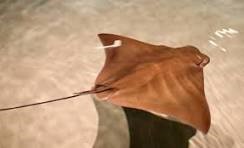Huntington Supervisor Ed Smyth and the Department of Maritime Services want residents to be on alert for an increase in some marine life in Huntington waters this summer.
During the warm summer months, it is not uncommon to spot some amazing animal life in our local waterways, including bullnose and cownose rays. Some helpful resident waterway enthusiasts have brought the ray sightings to the attention of the Town of Huntington Department of Maritime Services. Rays are harmless to humans however their tails do contain small barbs which are used for defense. If swiped by a bullnose or cownose ray tail, the contact could resemble a strong jellyfish or bee sting.
The Maritime Services office reached out to Doug Schmid, a local resident, Marine Biologist, and a Director with REACH, for comment. “Cow nose rays can be a common sight in our coastal waters in the summer and their “wing” tips, breaking the water’s surface can be mistaken for a shark dorsal fin”, said Schmid. “They are fascinating animals, we Long Islanders are fortunate to see them. Although these rays are not aggressive, like all rays they have tail barbs for defense [and a swipe will sting]”.
Most stings occur when a ray is accidentally stepped on or when someone tries to handle it, often when it is caught by an angler.
According to emedicine.com and the New England Aquarium, if stung, the affected area should be immersed in hot water (as hot as can be tolerated without causing burns) to help neutralize the venom. It's also important to seek medical attention to ensure proper wound care and to check for any complications like infection.
To prevent getting stung, be cautious when wading in shallow waters where rays may be present, especially in areas where they are known to congregate. Shuffle your feet to alert the ray and give it a chance to move away.
If you witness rays, or any other interesting marine life in our waterways, please feel free to contact the Department of Maritime Services to alert them at 631-351-3192.
Attached are photos of the Bullnose (dark color) and Cownose (light color) ray for identification purposes.

